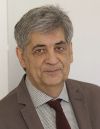Plenary Session 3AP.1
Sneak peek of the first plenary session
"Reliable and High Performance PV Modules"

Chair, International Advisory Committee
World Conference on Photovoltaic Energy Conversion
As it is almost a tradition of the EUPVSEC, we would like to provide a preview on the plenary sessions of the WCPEC-8.
The half-hour plenary presentations are an excellent opportunity to get briefed about major trends and developments in the technology and of the wide application of photovoltaics in general. Therefore, even if you are not specialist the specific topics, it is worthwhile to attend.
We will whet your appetite for the three plenaries in a sequence, today we describe what you can expect from the very first plenary of the 8th World conference on Photovoltaic Solar Energy Conversion in Milan.
We start today with the very first of many sessions of this big conference: On Monday, 26th September, 2022, at 8:30 there will be the plenary 3AP.1 titled Reliable and High-Performance PV Modules
The title reflects already today’s trends and emphasis in PV Module development for a global Tera-watt market, and there will be a presentation for each of the trends, and a final one on the modelling of the electrical performance of modules.
As the majority of PV Modules today are produced in China, we are particularly proud to have with Yifeng Chen a very renowned first plenary speaker at the conference. As Vice-Director at Trina Solar in Changzhou,China, he is Group Leader of High Efficiency Solar Cells R&D, and his presentation 3AP.1.1 is titled “Investigation of Technology Evolution of PV Industry: Learning from Historical and Recent Progress”. It promises an excellent overview about the history and future of solar cell development not only from the perspective of a major manufacturer in China, but also from his co-authors of UNSW Sydney and AMROCK, Australia. The presentation will not only give details on current efficiencies of the Trinasolar’s PERC technology, but postulates a new, 50% increased wafer size for the future generation of cells. He will claim that by fitting historical data the major improvements in PERC technology will come from efficiency improvements. Also, he will detail future equipment costs and how they influence the learning curve, also considering current difficulties in the supply chain.
The next presentation 3AP.1.2 at 9:00 will be given by Peter Hacke the from NREL, USA and is titled “Evaluation of Bifacial Module Technologies with Combined-Accelerated Stress Testing (C-AST)”. This presentation emphasises the reliability aspects in particular when bi-facial cells are employed. As also the rear side of module is active in PV-conversion, stricter requirements for module encapsulation and its longevity is essential. The authors analyses with different testing methods which accelerate the stress thatthe natural environment provokes in modules. The presentation promises to give a comprehensive overview on the failure modes and their prevention of bifacial PERC cells, including “Potential-induced Degradation (PID)” on the rear side with field-relevant illumination. As the market share of this technology approaches 50%, the presentation is very significant for today’s market development.
At 9:30 the third and last presentation 3AP.1.3 will be given by Marios Theristis of the SANDIA National Labs in the US. He is presenting a large international collaboration on a “Blind Photovoltaic Modeling Intercomparison”. This global collaboration spans 24 (!) organisations of 11 Countries from the Americas, Europe and Asia, a true showcase for this World conference. The work highlights the importance of the precise PV energy yield prediction, including for financing large deployments. Many parameters are considered in this modeling and it is not a surprise that many different modeling approaches and software do exist today. The presentation therefore brings the results of this very first comparison between the different approaches to predict the energy delivery of PV plants, for specific and given PV systems. We expect to hear what the spread of results is, or perhaps even answering the question what the best model today is.This concludes today’s preview on the WCPEC-8 plenary sessions. Our next preview will be on the Plenary Session 4CP of Wednesday, titled “PV Works Everywhere”.